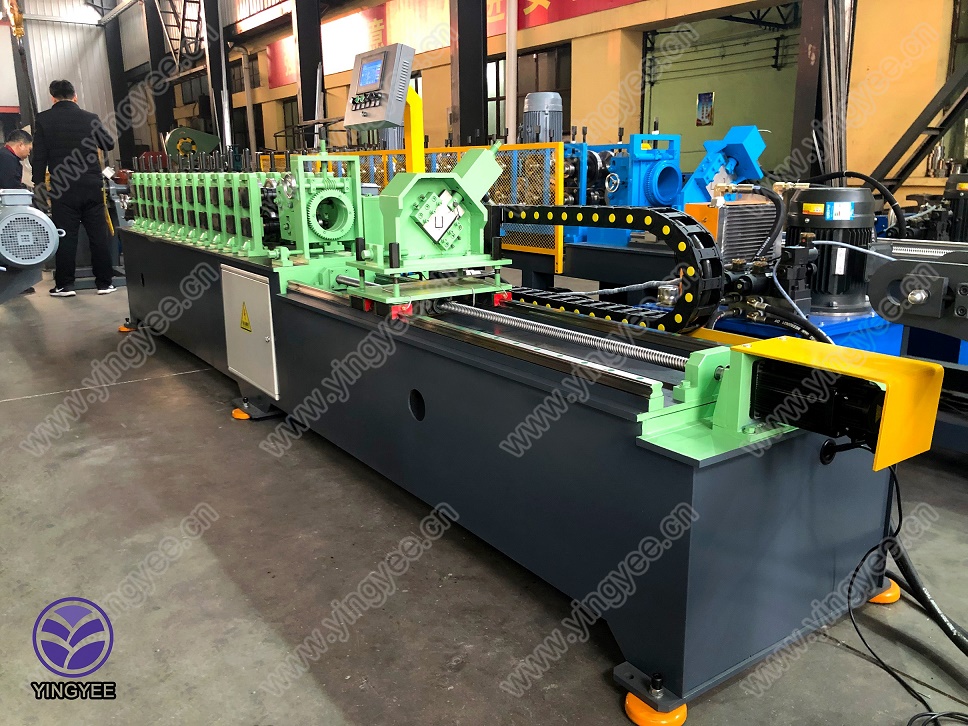
The Role of Roller Shutter Door Slat Machines in Modern Manufacturing
In an era where security and durability are paramount, roller shutter doors have emerged as a popular choice for both commercial and residential properties. Key to the production of these robust doors is the roller shutter door slat machine, an essential piece of equipment that shapes the slats which make up the door. This article delves into the significance of roller shutter door slat machines in modern manufacturing, exploring their functionality, advantages, and technological advancements.
Understanding Roller Shutter Door Slats
Roller shutter doors consist of multiple horizontal slats that interlock to form a solid barrier when closed. These slats can be made from various materials, including aluminum and steel, and are designed to withstand heavy impacts, resist corrosion, and provide enhanced insulation. The efficiency and quality of the slats fundamentally depend on the machinery used in their production, making the roller shutter door slat machine a crucial player in the manufacturing process.
Functionality of Roller Shutter Door Slat Machines
A roller shutter door slat machine operates by feeding raw materials, typically in coil form, through a series of rollers and dies. The machine gradually shapes the material into predefined profiles that are suitable for roller shutters. This process involves several steps, including
1. Material Feeding The raw material coils are fed into the machine, where they are unwound and straightened. 2. Roll Forming The machine uses a series of rollers to progressively shape the material into slats. This method ensures uniformity and precision in dimensions. 3. Cutting and Finishing Once the slats are formed, they are cut to the desired lengths and may undergo additional processes such as punching for lock mechanisms or painting for aesthetic and protective purposes. 4. Quality Control Advanced machines are equipped with sensors and automated systems that monitor the production process, ensuring that every slat meets quality standards.
Advantages of Using Roller Shutter Door Slat Machines

The use of roller shutter door slat machines offers numerous advantages to manufacturers
- Efficiency These machines can produce slats at a high speed, significantly reducing manufacturing time and increasing output. - Consistency Automated processes ensure that each slat is produced with the same specifications, minimizing variability and defects. - Cost-Effectiveness By streamlining production, these machines help lower labor costs and reduce material waste, ultimately enhancing profit margins. - Customization Modern roller shutter door slat machines can be programmed to create bespoke designs, catering to specific customer requirements and expanding market opportunities.
Technological Advancements in Roller Shutter Door Slat Machines
As technology continues to evolve, so do the capabilities of roller shutter door slat machines. Innovative features that enhance efficiency and control have been integrated into newer models. These advancements include
- Smart Technology The incorporation of IoT capabilities allows for real-time monitoring and control of the manufacturing process, enabling manufacturers to quickly respond to production issues. - Energy Efficiency New machines are designed with energy-saving features, reducing operational costs while maintaining high production standards. - User-Friendly Interfaces Modern machines often come with touchscreen controls and user-friendly software that simplify the operation and programming processes.
Conclusion
The roller shutter door slat machine plays a pivotal role in the production of one of the most reliable security solutions available today. Its ability to efficiently produce high-quality slats not only meets the demands of the market but also sets the foundation for the innovation and customization that drive the industry forward. As manufacturers continue to adopt advanced technologies, the future of roller shutter door slat machines looks promising, poised to adapt to changing trends and consumer needs. In essence, these machines are not just tools of production but vital components that enhance security and convenience in our everyday lives.